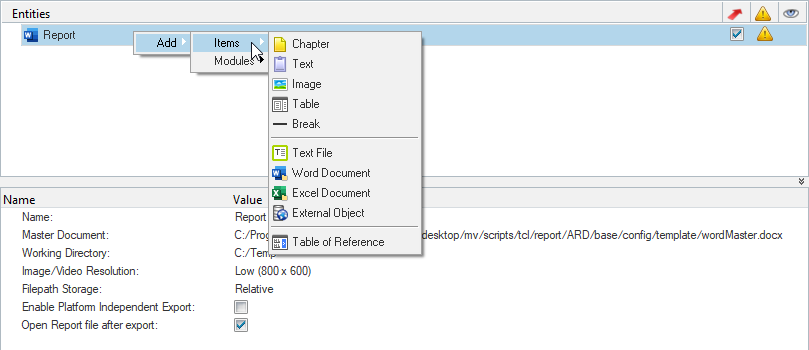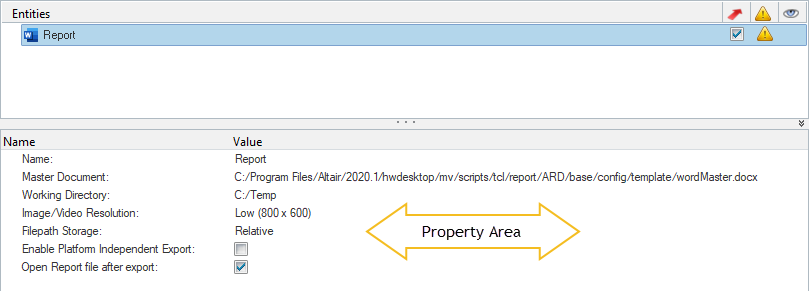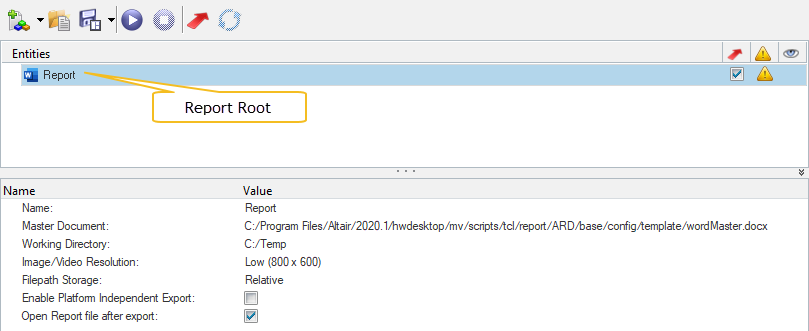Report Browser User Interface Overview
The Report Browser is used to create, execute, and export Document and Presentation reports.
- Access
- From the menu bar, select .
The Report tool interface can be split into following sections:
Toolbar
| Labels | Buttons | Usage |
|---|---|---|
| New |
 |
Load a new Master file and define the report
session format:
|
| Load |  |
Load a report template (.tpl). |
| Save |  |
Save the report template. |
| Execute |  |
Execute items in the tree. |
| Pause |  |
Pause the execution process. |
| Stop |  |
Stop the execution process. |
| Export Report |  |
Export the report to a destination folder. |
| Synchronize Report |
 |
Synchronize an exported report with new
changes. Note: Activates once you export a
report.
|
| Close |  |
Close the Report Browser. |
Tree Area

- Entities
- Report entity type, which can be an image, text, table, or chapter.
- Export Report (
 )
) - Entities to export.
- Synchronize Report (
.png) )
) - Synchronize changes to report.
- Status (
 )
) - Status of an entity.
- Preview (
 )
) - Once an entity is executed or an output is created, click the preview icon to view and verify.
- Right-click context menu
- This menu is context or entity-specific. You can access various options
related to each entity.Figure 3.

Entity Editor

The Entity Editor is updated based on the entity selected. Every property is editable.
- Name
- Report title.
- Master Document
- Base Word or PPT master template.
- Working Directory
- Working directory location, which stores all data generated, such as images and temp files, during the report execution.
- Image/Video Resolution
- Select image or video resolution.
- File path Storage
- Select the file path information storage type.
- Enable Platform Independent Export
- Allows you to export Document or Presentation reports when there is no Microsoft Office software installed.
- Open Report file are export
- Check the option to open the report file after export.
